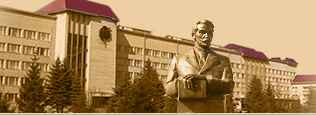ON THE ISSUE OF TOURISM RESOURCES.
Differing vectors and diversity of interpretations of the term “tourism resources”, the presence of a significant amount of scientific research demonstrates a lack of knowledge of some important theoretical and practical issues. When it comes to tourism resources, in most cases it implies their presence, location and peculiarities of usage in the tourism sector. The problem of studying tourism resources engaged and involved many domestic and foreign scholars. The works of N. V. Fomenko, V. Herasymchuk, I. V. Smal (Ukraine), D. Shverson, K. Hall (USA), I.O. Kvartalnyi, V. Yu. Voskresenskyi (Russia) and others representatives of international research groups are devoted to this issue. They all are studying the category of tourism resources, using different approaches. Most of them are based on the use of sequences from narrow to broad-based approach, where the role of secondary or ancillary tourism resources is noticeable. The term “organization” in relation to tourism resources is available only in connection to the tourism industry analysis. However that is just a superficial understanding of this term without awareness of the multidimensional essence, meaning and internal content. In this article we have tried to show the structure of tourism resources in terms of a combination of static and dynamic component. The static component requires a different kind of coherent structures (natural, social, etc.) and dynamic component allows you to create and maintain the integrity of the natural and anthropogenic unions that have already functioned or are just being formed.
Key words: organization, tourism resources, classification approaches, systems analysis, system of tourism resources
References:
- Bogdanov А. А. Vseobshcsaya оrganizatsionnaya nauka (tektologiya).- М.,1913-1917., Т. 1.,2; 2-е izd. М.; Л., 1925-1929., Т 1-3.
- Gnativ P. S. Teoriya sustem і sustemnuy analiz v ekologiyi / P. S. Gnativ, P. R. Hirivskuy. – Lviv, 2010. – 204 s.
- Dyakonov K. N. Geograficheskiye zakonu i ih fizicheskaya sushnost // Vopr. geogr. /1981. № 117. – S. 28-40.
- Kovalov О. P. Na mezi landshaftno-geografichnogo strukturalizmu // Naukovuy visnuk Chernivestkogo universutetu: Zbirnuk naukovuh prats. Vup. 305: Geografiya. – Chernivtsui: Ruta, 2006. – S. 3-11.
- Luybitseva О. О. Do putannya terminologiyi v turuzmi / О. О. Luybitseva // Geografiya ta turuzm. – 2010. № 3.- S. 7-10.
- Matviychuk L. Yu. Instutytsionalno-organizatsiyne zabezpechennya efektuvnogo vukorustannya ta ohoronu tyrustuchnuh resyrsiv.[Elektronnuy resur].www.economy.nayko.com.ua.
- Matsa K. О. Sistemu neorganicheskiye, organicheskiye, sotsialnuye: svoystva i printsupu organizatsiyi: monografiya / K. O. Matsa. – K.: Obriyi, 2008. – 196 s.
- Monasturskuy G. L. Teoriya organizatsiyi.[Elektronnuy resyrs] http: //westudentc.com.ua.
- Petlin V. М. Ekologichni mehanizmu organizatsiyi prurodnuh terutorialnuh sustem / V. M. Petlin. – Lviv, Vud. Tsentr ЛNU іm. І. Franka, 2008. – 291 s.
- Preobrazenskiy V. S. Rekreatsionnaya geografiya, eye sostoyaniye i perspektivu /V. S. Preobrazenskiy , B.N. Lihanov, Yu. А. Vedenin // Sotsialno-ekonomicheskiye i geograficheskiye aspektu issledovaniya. – М.; 1974. – S. 1-16.
- Pitsyn Ya. S. Teoretuko-metodologichnuy analiz protsesuy formuvannya ta naroschuvannya tyrustuchnogo potentsialy terutoriyi Ukrainu / Ya. S. Pitsyn // Mater. 7-i miznarodn. naykovo-praktuchnoyi konf. «Geografiya, ekonjmika і tyruzm». – Lviv, 2013.- S. 362-364.
- Setrov М. I. Osnovu fynktsionalnoy teoriyi organizatsiyi. – L., 1972. – 98 s.
- Setrov М. I. Obschiye printsipu organizatsii sistem i ih metodologitcheskoye znatcheniye. – L., Nauka, 1968. – 120 s.
- Solntsev V. N. Sistemnaya organizatsiya landshaftov: (Problemu metodolodiyi i teorii. – М.: Мusl, 1981. – 239 s.
- Yrsyl А. D. Informatsionnuy aspekt vzaemodeystviya obschestva i prirodu // Priroda i obschestvo. – М.: Nayka, 1968. – S. 290-297.
Full text:
